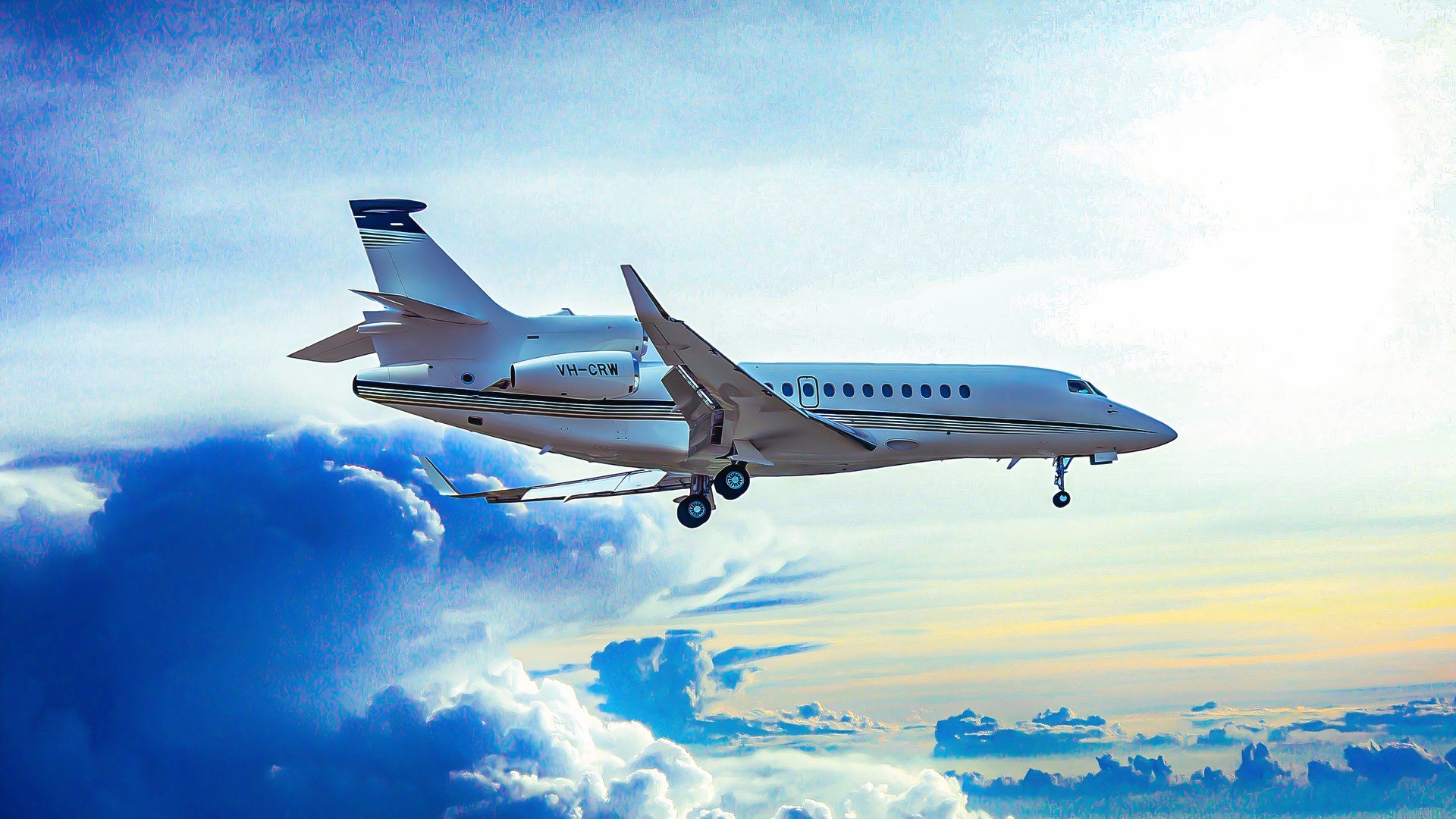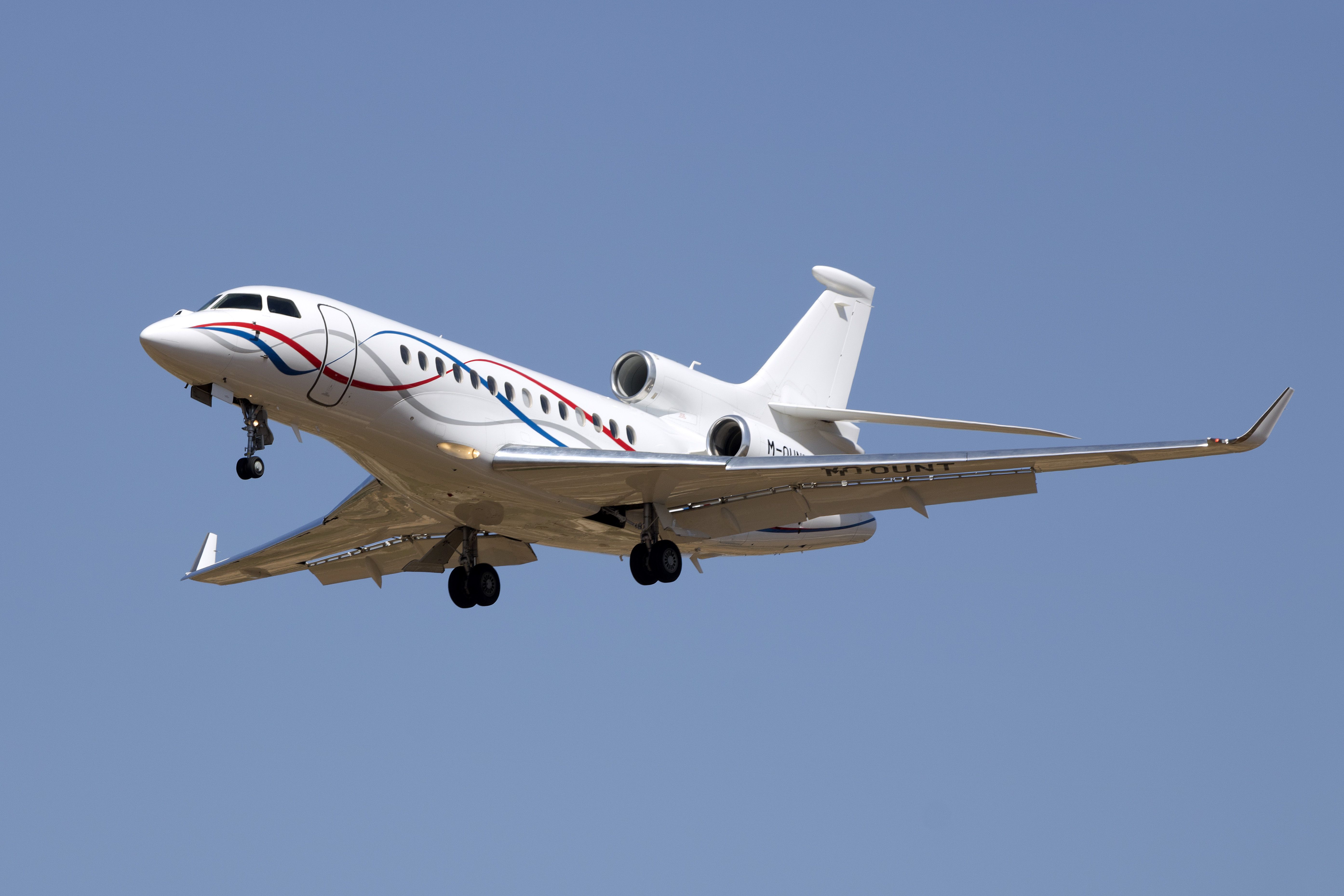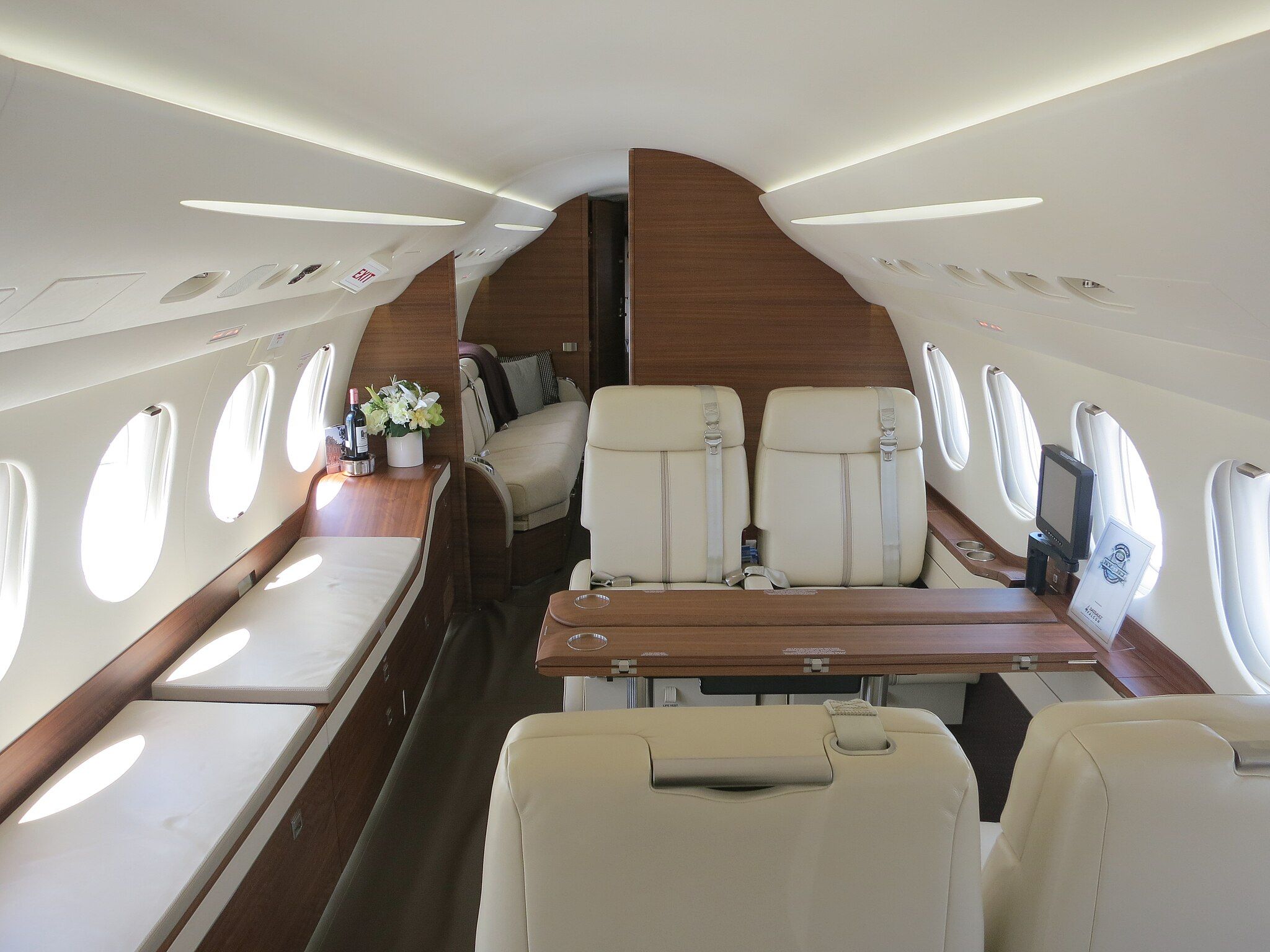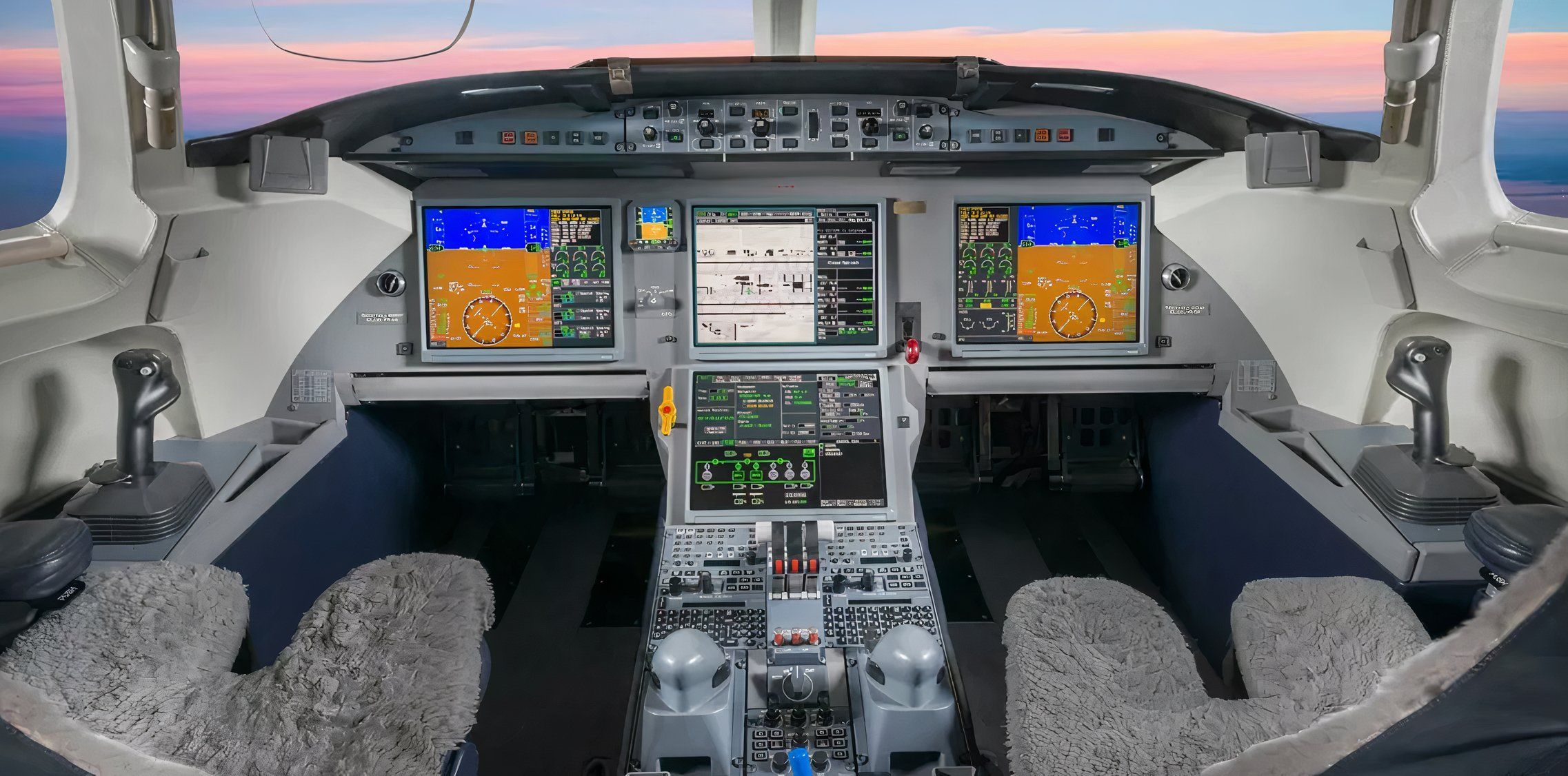Summary
- The Falcon 7X’s trijet configuration with three engines offers enhanced performance and safety.
- The first fully digital fly-by-wire system in a private jet provides precision control and a smoother ride.
- The Falcon 7X’s innovative wing design, extended range capabilities, spacious cabin, and advanced avionics make it unique.
The Dassault Falcon 7X is a remarkable private business jet that stands out due to several unique features.
1
Trijet Configuration
Extended range and efficiency from a third engine
There have been many historic three-engine aircraft designs in the commercial aircraft category. However, only Dassault Aviation produces the iconic trijet Falcon series in the private jet sector.
Photo: InsectWorld | Shutterstock
The Falcon 7X features a unique trijet configuration with three Pratt & Whitney Canada PW307A engines. This design offers several advantages:
- Enhanced Performance: The three engines provide a total thrust of 19,206 lbs, allowing for excellent climb rates and high-altitude performance.
- Improved Safety: The third engine adds an extra layer of redundancy, increasing safety during long-range flights over water or remote areas.
- Easier Regulatory Compliance: The third engine eliminates contingent airport constraints on over-water and remote flights.
- Noise Reduction: Special engine mounts contribute to a quieter cabin, with noise levels below 50 dBA.
Dassault Falcon 50: Introduced in 1976, it was the first of the Falcon trijets.
Dassault Falcon 900: Launched in 1984, The Falcon 900 is known for its long-range capabilities.
Dassault Falcon 7X: Introduced in 2005, it features advanced avionics and a long range.
Dassault Falcon 8X: An extended version of the Falcon 7X, introduced in 2016.
2
Advanced Fly-by-Wire System
The first fully digital fly-by-wire private jet
The Falcon 7X was the first business jet to feature a fully digital fly-by-wire flight control system.
- Precision Control: This system allows for more precise aircraft control, reducing pilot workload and enhancing overall flight safety.
- Smoother Ride: The fly-by-wire system automatically compensates for turbulence, providing passengers with a smoother and more comfortable flight experience.
Dassault leveraged its military aircraft engineering experience to design the first fly-by-wire business jet—the Falcon 7X.
Fly-by-Wire (FBW) is a system that replaces an aircraft’s conventional manual flight controls with an electronic interface. Here are the key points:
Electronic Interface: Movements of flight controls are converted to electronic signals transmitted by wires.
Flight Control Computers: These computers determine how to move the actuators at each control surface to provide the ordered response.
Stabilization and Safety: The fly-by-wire computers stabilize the aircraft and adjust the flying characteristics without the pilot’s involvement, preventing the pilot from operating outside the aircraft’s safe performance envelope.
Weight Saving: FBW systems are lighter and less bulky than mechanical controls, allowing increases in fuel efficiency and aircraft design flexibility.
This technology enhances the flight experience by providing more precise control and reducing the weight and complexity of the aircraft’s control systems.
3
Innovative Wing Design
The Falcon 7X 34.5-degree swept wing is stable and efficient
The Falcon 7X boasts a highly swept wing design with winglets, a first for the Falcon jet series.
- Improved Efficiency: This design significantly reduces drag, improving fuel efficiency and extending the aircraft’s range.
- Enhanced Stability: The wing design contributes to better stability during all phases of flight, particularly at high altitudes.
4
Extended Range Capabilities
Extended range capability means global reach
With a range of 5,950 nautical miles (11,019 km), the Falcon 7X offers impressive long-distance capabilities.
- Intercontinental Flights: This range allows non-stop flights between city pairs, such as New York to Tokyo or Paris to Singapore.
- Fuel Efficiency: Despite its long range, the 7X maintains excellent fuel efficiency, consuming only 318 gallons per hour.
5
Spacious and Customizable Cabin
The large cabin provides three spaces for up to 16 passengers
The Falcon 7X features a large cabin that owners can customize to suit various needs:
- Cabin Dimensions: The cabin measures approximately 39.1 feet in length, 6.2 feet in height, and 7.7 feet in width.
- Flexible Configuration: The cabin can be divided into three living areas, accommodating up to 16 passengers.
- Ample Storage: With 140 cubic feet of baggage space, the 7X offers plenty of room for luggage and equipment.
6
Advanced Avionics Suite
The Honeywell Primus Epic EASy avionics suite is intuitive and enhances safety.
The Falcon 7X’s avionics suite is the Honeywell Primus Epic “Enhanced Avionics System” (EASy).
Photo: Honeywell
- Intuitive Interface: The system features four 13×10-inch flat-panel, high-resolution LCDs, providing pilots with clear and comprehensive flight information.
- Enhanced Safety Features: The avionics suite includes enhanced ground proximity warning (EGPWS) and a turbulence detection weather radar.
7
Computer-Aided Design
Dassault designed the 7X with help from CAD.
The Falcon 7X was the first aircraft designed entirely on a virtual platform using Dassault Systèmes’ CATIA and PLM products.
- Precision Engineering: This approach allowed for unprecedented precision in design and manufacturing.
- Efficient Development: The virtual design process streamlined development, reducing time and costs.
Performance Data Table
|
Specification |
Value |
|
Maximum Cruise Speed |
497 knots (920 km/h) |
|
Long-Range Speed |
459 knots (850 km/h) |
|
Maximum Operating Altitude |
51,000 ft (15,545 m) |
|
Takeoff Distance |
5,760 ft (1,739 m) |
|
Landing Distance |
2,120 ft (646 m) |
|
Maximum Takeoff Weight |
70,000 lb (31,751 kg) |
|
Maximum Landing Weight |
62,400 lb (28,304 kg) |
These unique features collectively make the Dassault Falcon 7X a standout aircraft in the business jet market. It offers a combination of performance, comfort, and advanced technology that few competitors can match.



